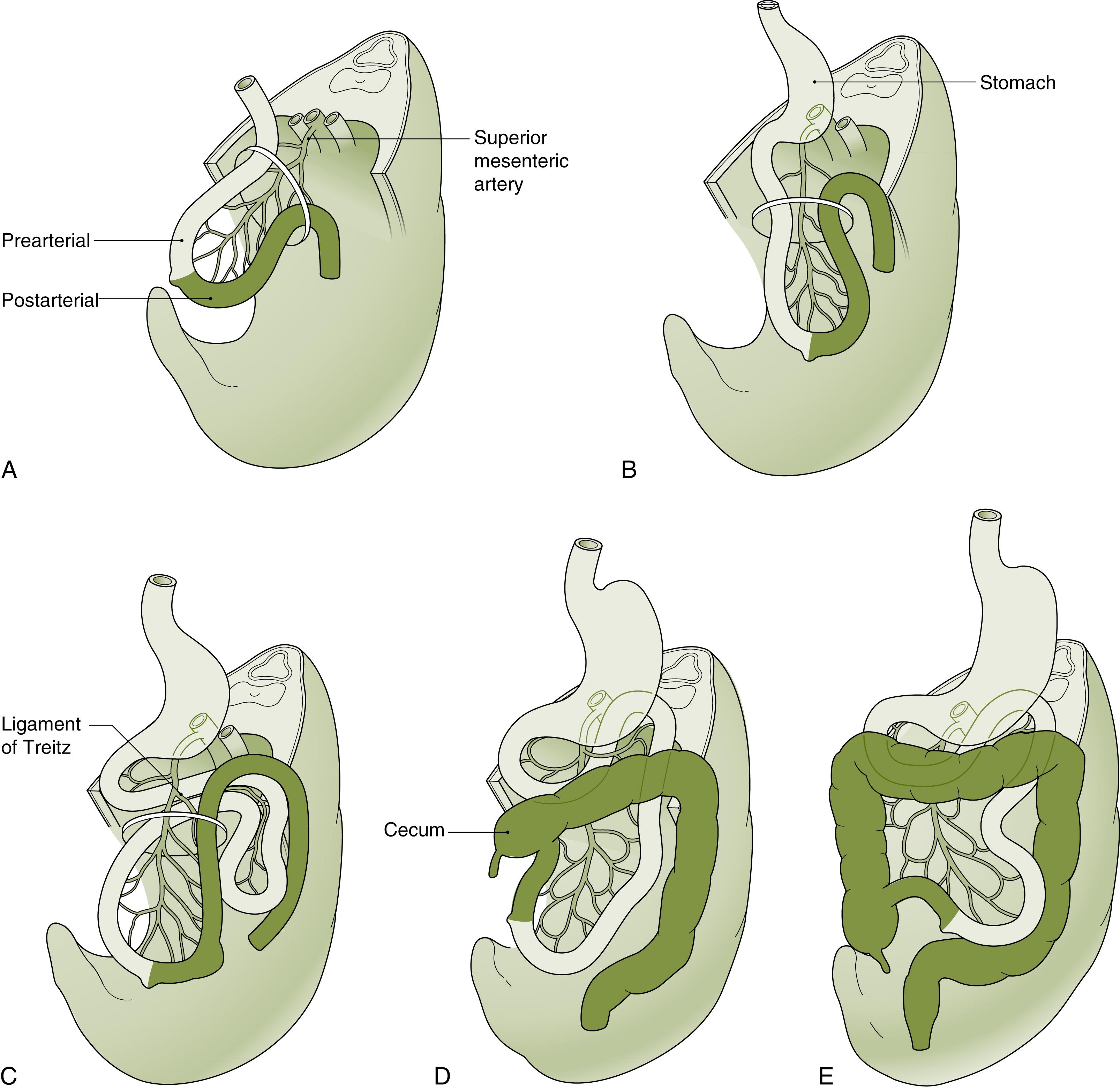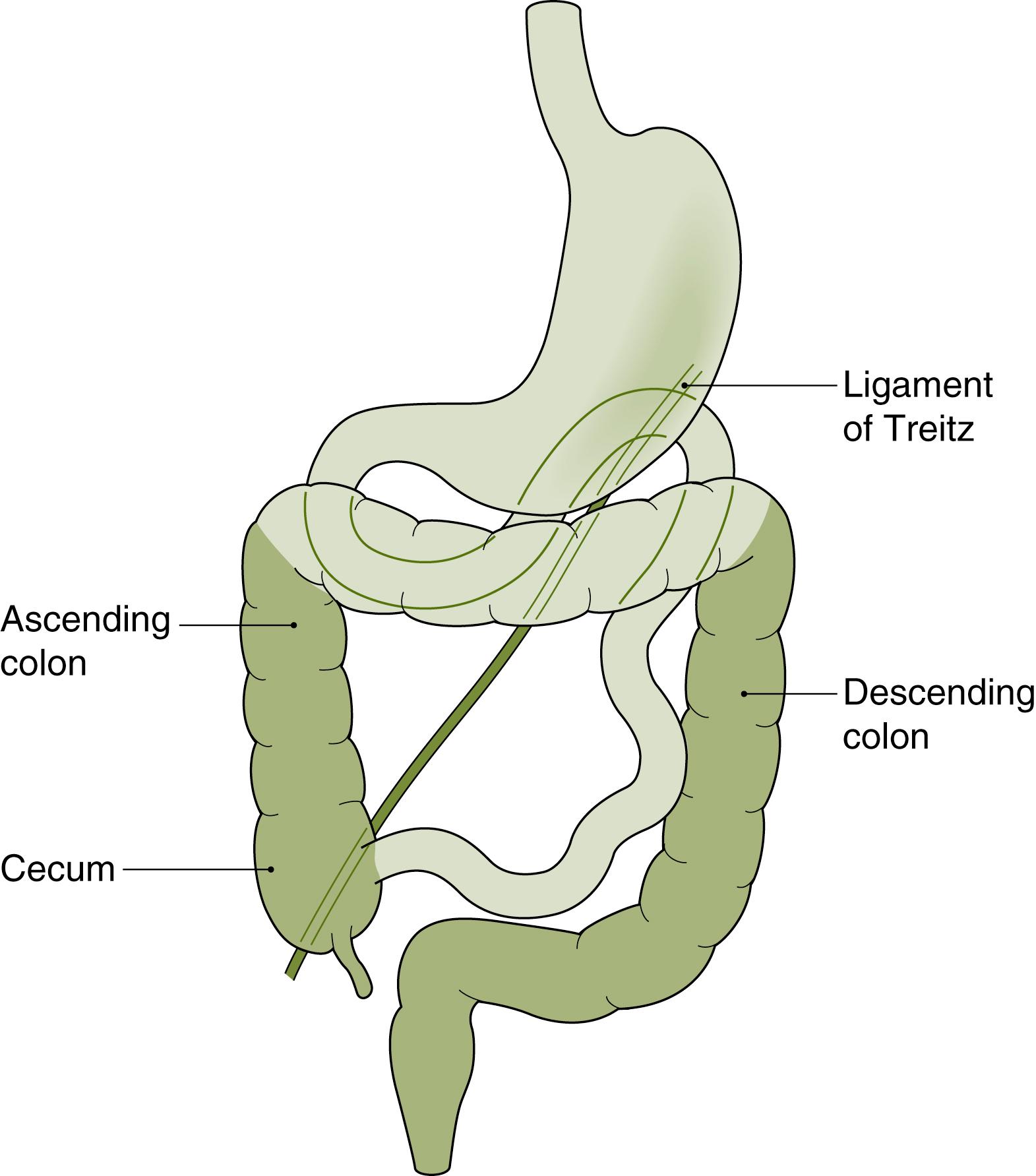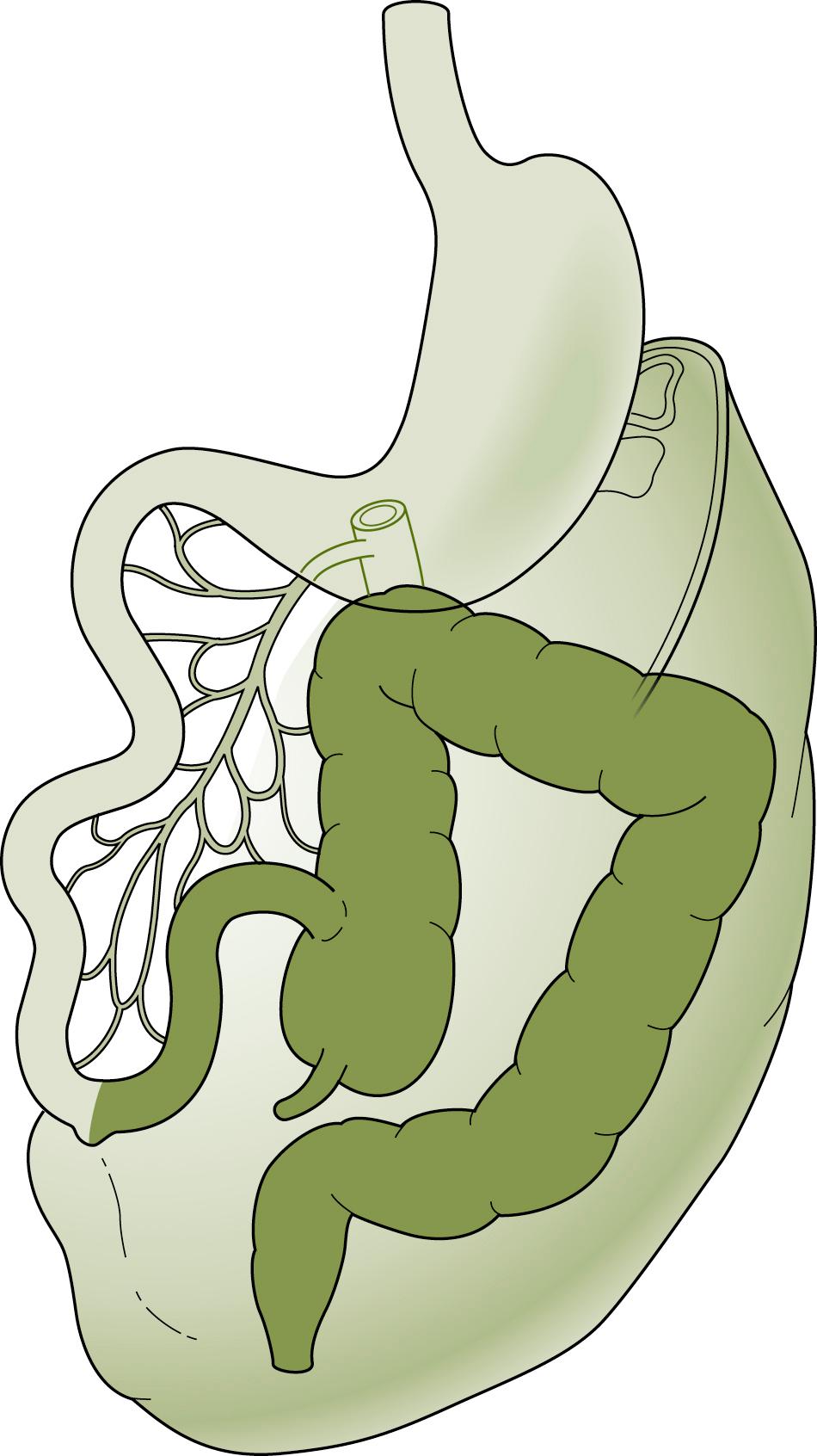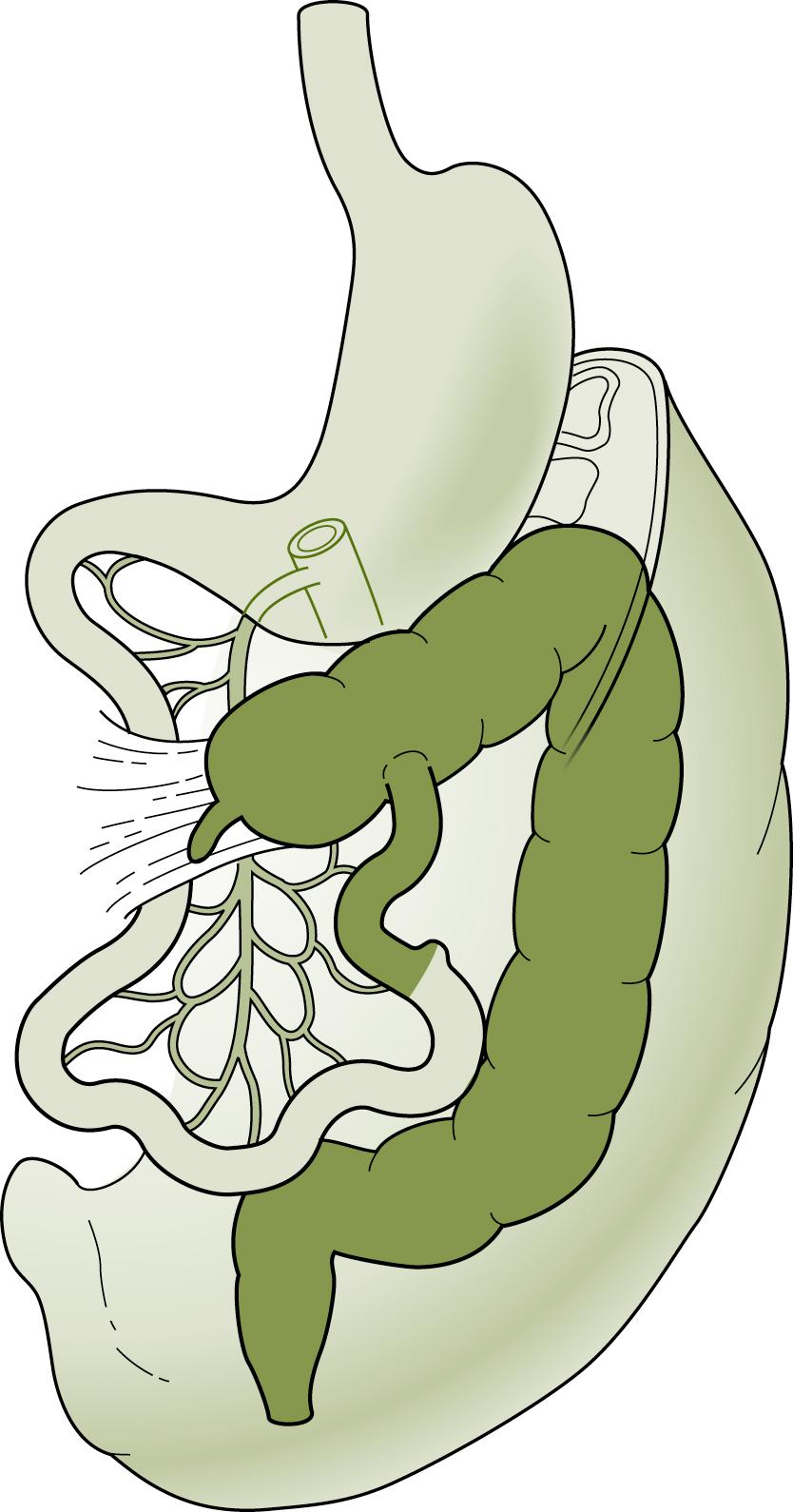Physical Address
304 North Cardinal St.
Dorchester Center, MA 02124
Normal intestinal growth and development follows a stereotypical pattern of mesenteric rotation and subsequent intestinal fixation to the body wall during fetal life. The term malrotation has been widely used to describe various disorders of abnormal intestinal rotation and fixation. Clinically symptomatic abnormalities of intestinal rotation and fixation are encountered infrequently. The major life-threatening problem associated with malrotation is the potential for the intestine to twist on its mesenteric axis, giving rise to a surgical condition known as midgut volvulus. Given the relatively unpredictable nature of midgut volvulus and the catastrophic consequences of subsequent total intestinal necrosis, clinicians must maintain a high index of suspicion for malrotation with volvulus in any infant or child with bilious emesis. In a symptomatic infant or child with midgut volvulus, prompt diagnosis and emergent surgical intervention is essential for prevention of intestinal necrosis. In the incidentally diagnosed asymptomatic infant or child, many pediatric surgeons also recommend prophylactic operative intervention.
During normal intestinal fixation, critical embryologic events occur to the developing body wall. Normal intestinal fixation requires sequential growth, elongation, and rotation of the intestine beginning as early as the fifth week of gestation as illustrated in Fig. 56.1 . Three distinct stages must occur for normal intestinal fixation. The first stage involves herniation of the primary intestinal midgut loop into the base of the umbilical cord, where it remains until the 10th week of gestation. The sagittal axis of the herniated midgut loop is the vascular pedicle of the superior mesenteric artery (SMA). The SMA axis divides the midgut into prearterial and postarterial segments, with the omphalomesenteric duct, or vitelline duct, located at the apex of the midgut loop. This loop rotates 180 degrees counterclockwise so that the proximal prearterial half of the loop passes posterior to the SMA. The proximal prearterial segment gives rise to the proximal duodenum, which normally lies to the right of midline. The more distal prearterial segment rotates another 90 degrees as it passes posterior and to the left of the SMA, becoming the third and fourth portions of the duodenum. The distal duodenum is normally fixed to the left of the aorta at the ligament of Treitz, having rotated 270 degrees counterclockwise from its original position. The distalmost portion of the prearterial segment undergoes substantial elongation to form the jejunum and ileum. The embryonic postarterial segment, which gives rise to the cecum and right colon, also undergoes growth and elongation with a complete 270-degree counterclockwise rotation. Therefore, although the cecum is initially positioned posteriorly and to the left, the normal rotational pattern places the cecum anterior and ultimately to the right of the SMA before attaching to the posterior wall of the right iliac fossa.

The second important step of midgut development is reduction of the extracelomic gut, occurring simultaneously with the completion of midgut rotation between 10 and 12 weeks of gestation. At this point in fetal development, the duodenojejunal junction has passed posterior to the SMA and the midgut has rotated 180 degrees counterclockwise. The small intestine initially remains to the right of midline, and the cecum and ascending colon are still anterior to the SMA on return of the intestine to the abdominal cavity. Once the abdominal cavity expands to allow the midgut to return, the elongated small intestine returns to the abdominal cavity, passing posterior to the cecum and ascending colon and ending left of midline. The distal segment then follows, returning to the abdominal cavity while completing its 270-degree rotation. Many common abnormalities of intestinal fixation occur as a result of arrested development during this 2-week period.
The final stage of midgut development is fixation of the intestine to the posterior body wall, occurring after the 12th week of gestation. Normal points of fixation include the cecum in the right iliac fossa and the duodenojejunal junction at the ligament of Treitz ( Fig. 56.2 ). The normal small bowel mesentery is ultimately fixed to the posterior body wall, with a broad base extending from the ligament of Treitz to the cecum. This broad-based mesenteric attachment normally prevents torsion of the intestinal mesentery around its vascular supply. In contrast, abnormalities of intestinal rotation may cause the mesentery to lack a broad-based attachment or have poor fixation to the posterior body wall. The lack of intestinal fixation, along with a narrow vascular pedicle, produces an anatomic predisposition that may lead to volvulus.

The normal embryologic sequence for intestinal rotation and fixation can be interrupted at all developmental stages, producing a diverse spectrum of rotational and fixation abnormalities. There are a number of distinct congenital anomalies strongly associated with abnormalities of intestinal rotation and fixation secondary to persistent midgut herniation from the abdominal cavity during fetal development. These anomalies include congenital diaphragmatic hernia and abdominal wall defects such as omphalocele and gastroschisis. Therefore, many patients with congenital anomalies will have intestinal malrotation. Several conditions associated with an increased incidence rate of intestinal malrotation are listed in Box 56.1 .
Asplenia/polysplenia/heterotaxy syndrome ,
Atrial isomerism
Congenital diaphragmatic hernia
Duodenal, jejunoileal atresia ,
Esophageal atresia/tracheoesophageal fistula ,
Gastroschisis/omphalocele
Hirschsprung disease
Intestinal pseudo-obstruction
Intussusception
Although abnormalities of intestinal malrotation and fixation are often described under the general term malrotation , specific anatomic conditions are further characterized in the following subsections.
This is a relatively common anomaly characterized by incomplete counterclockwise rotation of the midgut around the SMA. Instead of the normal 270-degree arc, rotation is either absent or arrested before exceeding 90 degrees of rotation ( Fig. 56.3 ). The small intestine resides on the right side of midline, the colon resides on the left, and the cecum is displaced anteriorly and midline. The duodenojejunal junction is to the right of midline and is more caudal and anterior in position. Nonrotation carries a significant clinical risk of midgut volvulus because the small bowel mesenteric vascular pedicle is very narrow at its base. Duodenal obstruction may also occur as a result of peritoneal attachments fixing the cecum to the posterior body wall. These peritoneal attachments, also known as Ladd bands, pass anterior and lateral to the distal duodenum. Duodenal obstruction secondary to Ladd bands is treated with surgical division of the abnormal cecal attachments crossing the duodenum.

This abnormality of intestinal rotation is characterized by arrest of normal rotation at or near 180 degrees rather than the normal 270 degrees ( Fig. 56.4 ). Instead of rotating posterior and left of the SMA, incomplete rotation of the prearterial segment leaves the duodenojejunal junction to the right of midline. The cecum does not complete counterclockwise passage anterior to the SMA and, therefore, the incompletely rotated cecum usually resides in the midepigastrium to the left of the SMA, overlying the distal duodenum. Similar to nonrotation, abnormal fixation of the cecum to the right posterolateral body wall by Ladd bands places the duodenum at risk for compression or obstruction. In addition, the mesenteric vascular pedicle is narrow and places the entire midgut at risk for volvulus.

This is a rare condition with sporadic case reports in the literature. , Instead of the normal counterclockwise rotation, the proximal segment of the developing midgut rotates in a 90-degree clockwise arc—the cecum and transverse colon pass posterior to the SMA, while the duodenum passes anterior to the SMA. Duodenal or colonic obstructive symptoms caused by reversed rotation are often chronic and may be difficult to diagnose.
Become a Clinical Tree membership for Full access and enjoy Unlimited articles
If you are a member. Log in here